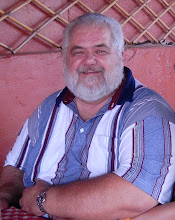Wat Arun is one of the best known landmarks in Bangkok. It is actually on the Thonburi side of the river and predates the present Chakri dynasty. First known as Wat Makok (Olive Temple), it was originally built during the Ayutthaya period of Thai history. Thonburi was a stop on the Chao Phraya ( River of Kings) for the ships of many nations to obtain provisions and replenish supplies. It is said that King Taksin arrived at the temple just at dawn and went to pay homage to the relic inside the pagoda. When Taksin crowned himself king and placed his capital at Thonburi, he renamed the temple Wat Chaeng –The temple of Dawn.
It was during the Chakri dynasty that the name Wat Arunratchawararam Ratchaworamahavihara ( variously translated as “the Temple of Dawn” and “Temple of the Dawn”) was used. The name was for the Indian God of Dawn, Aruna. Wat Arun, as it is commonly known today, has a long history which has become intertwined with the present Chakri dynasty. During the reign of Rama I and continuing to and including the present King, Rama IX, Wat Arun has enjoyed an important part in Thai history.
When Rama I moved the capitol across the river to Bangkok, he had disestablished Wat Chaeng as a royal temple. Still, it was a popular temple with the people and successive kings of the Chakri dynasty began to support the temple. King Rama II (1809-24) started the enlargement of the central prang (a prang is a Cambodian style pagoda) and is said to have designed the Buddha image that today resides in the Ordination Hall (Bot). Rama III (1824-51) continued the work on the central prang and today it is in excess of 60 meters tall. This towering prang and its four smaller ones represent Mount Meru, or the center of the universe in Buddhist cosmology.
The core of the prang is made of brick and is covered with plaster or stucco. Into this plaster is set bits and pieces of Chinese porcelain and glazed ceramic tiles. The entire complex, including the statues, is covered with these brightly colored materials. Seeing the site from the river is magnificent and is truly beautiful. The grounds of this temple are very well kept and walking around looking at the various smaller prangs, statues and murals is a worthwhile endeavor. However, understanding a little of the symbolism of the structure makes it even more enjoyable.
1) The main prang is represents Mount Meru
2) The four smaller prangs represent the winds, with a statue of Phai (the god of the winds ) on his horse in each prang
3) The square on the first terrace, formed by the four smaller prangs, has pavilions in the middle of each which contain images depicting the four stages of the Buddha’s life. (birth, meditation, preaching and enlightenment)
4) These pavilions guard the stairs which lead to the second and third levels of the large prang.
5) The second terrace has four statues of the Hindu god Indra riding on Erawan.
6) The two demons that guard the entrance are from the Ramakien. The Ramakien is Thailand’s national epic, which is derived from the Hindu Indian Ramayana epic.
This beautiful temple, named for the dawn, is especially beautiful at sunset when you are across the river in Bangkok.





No comments:
Post a Comment